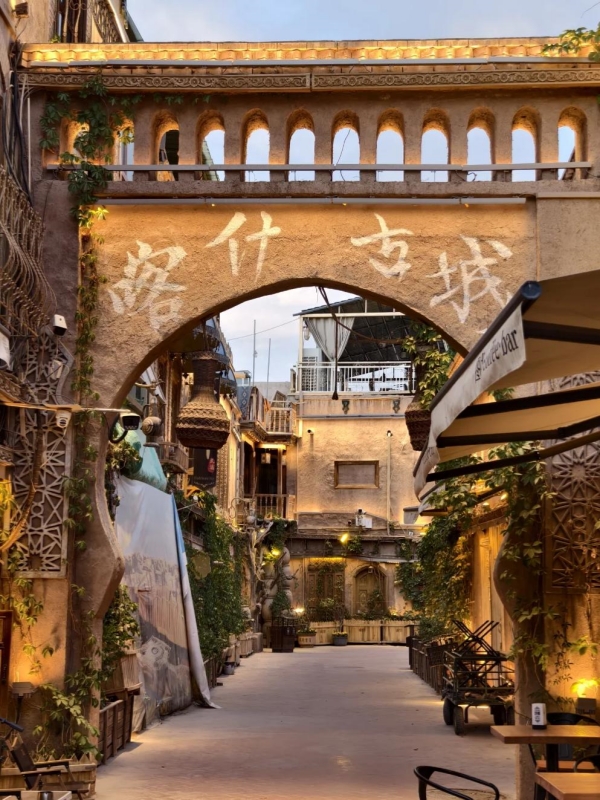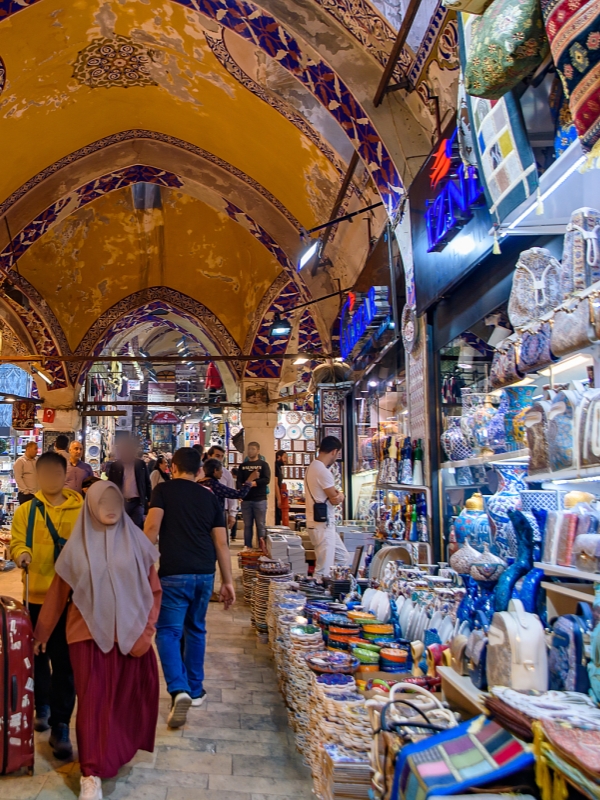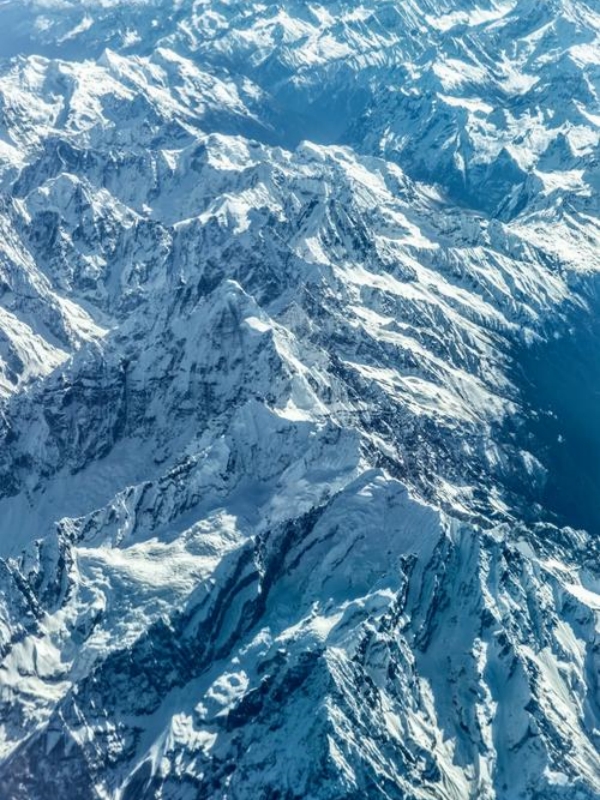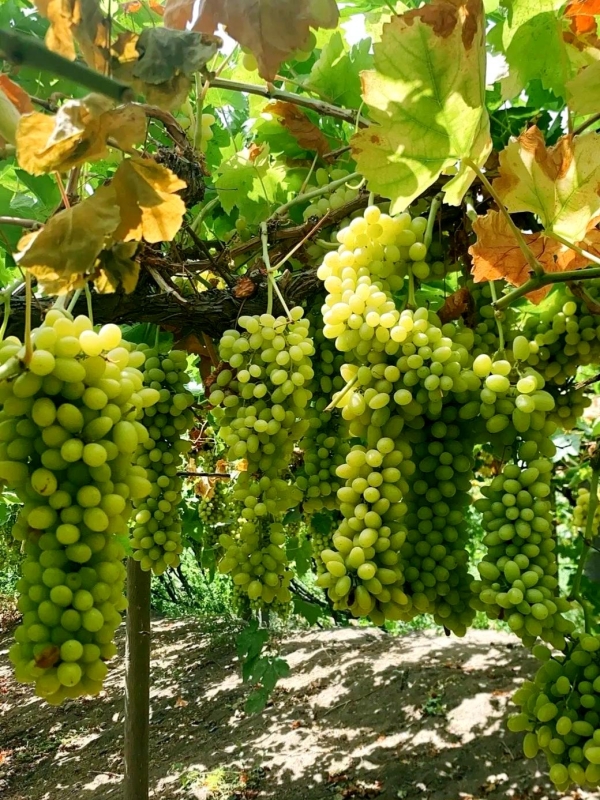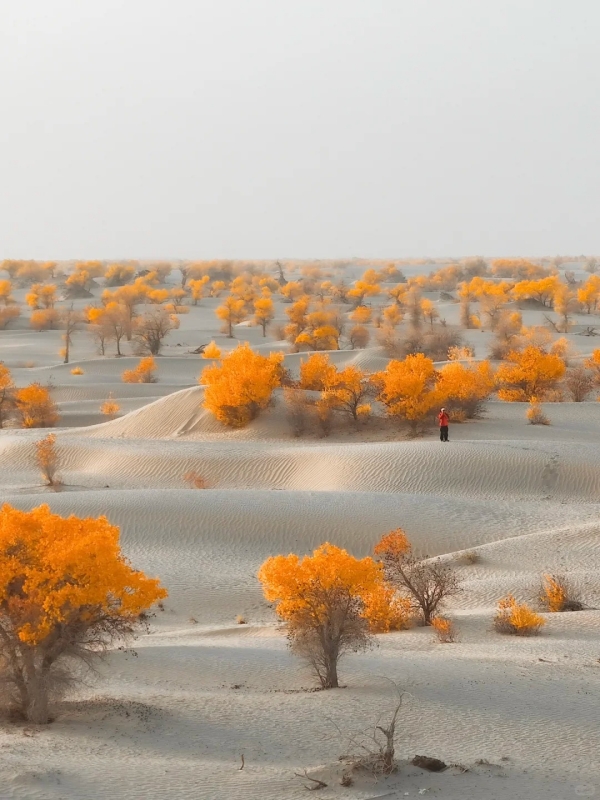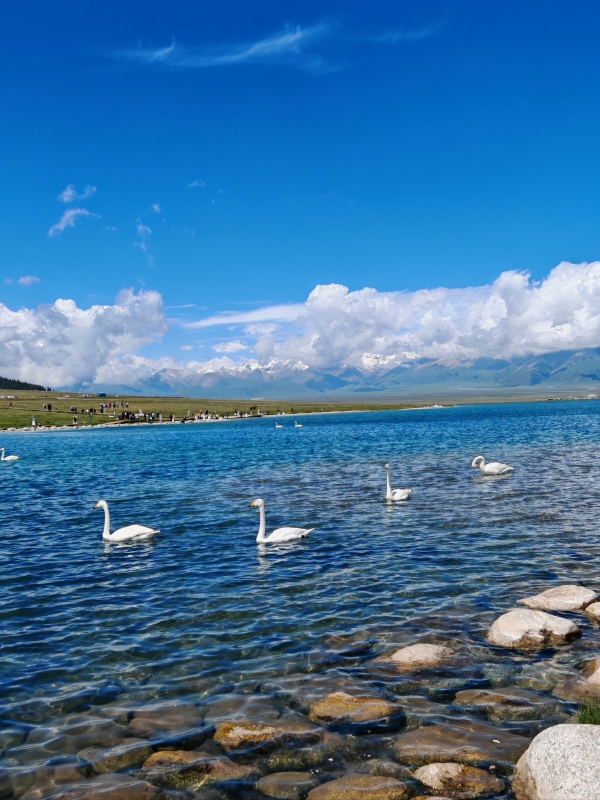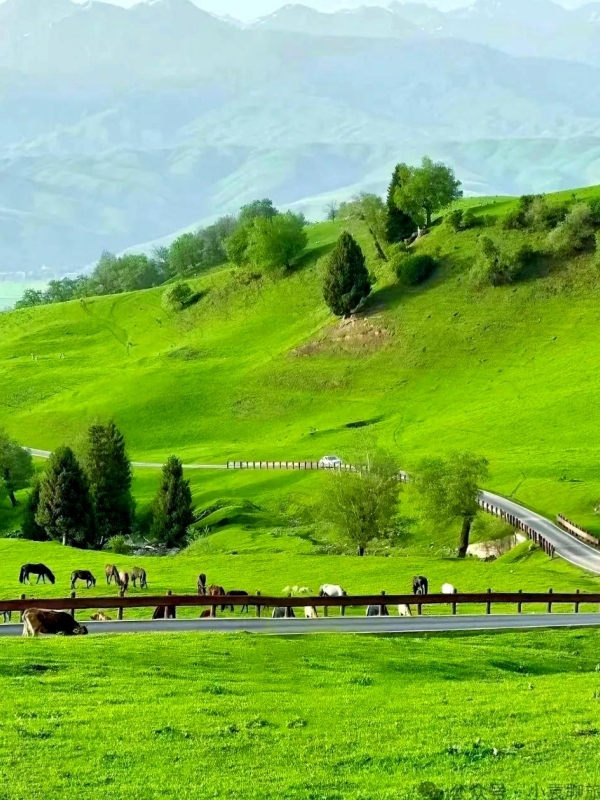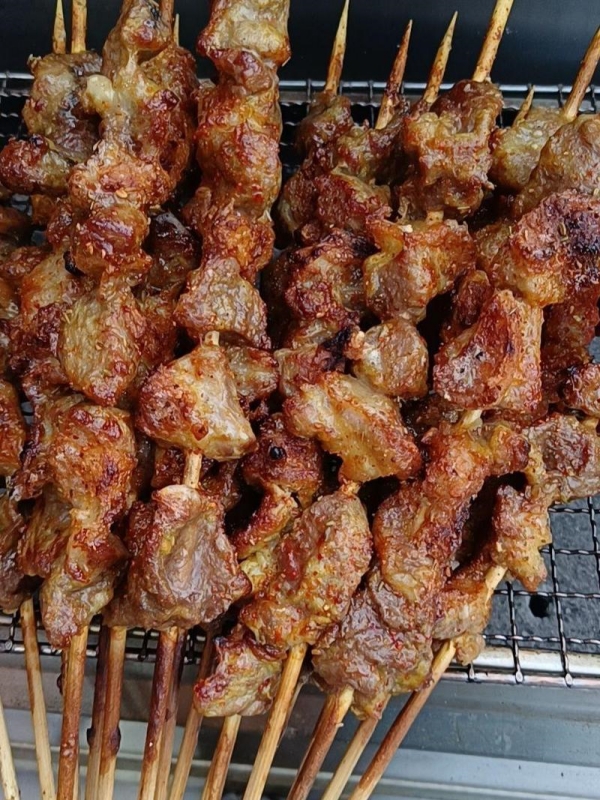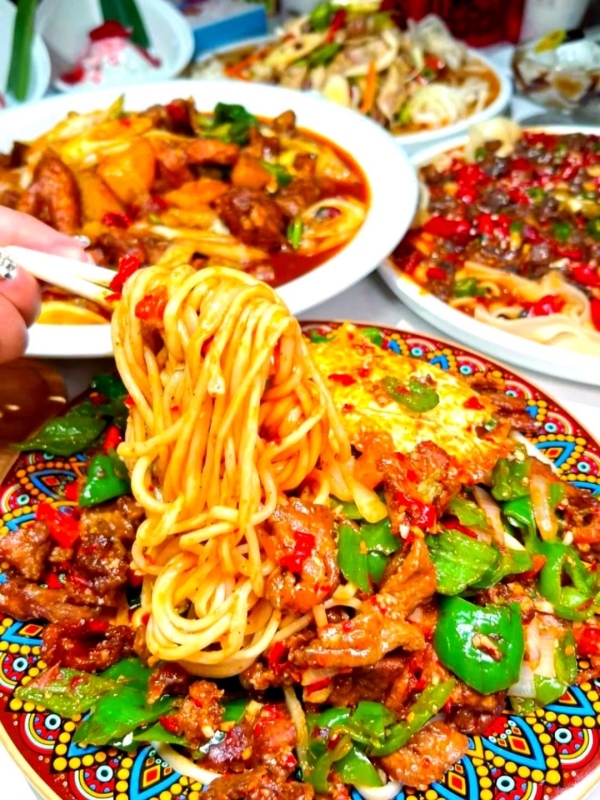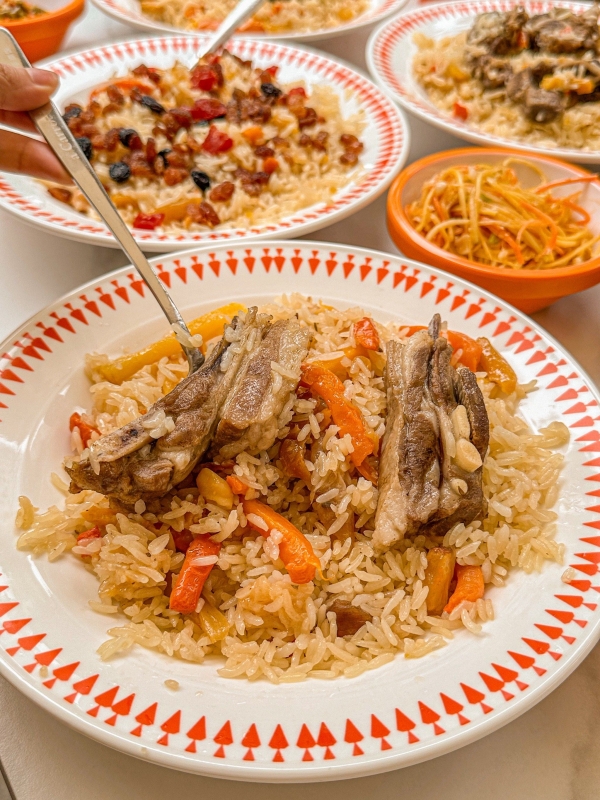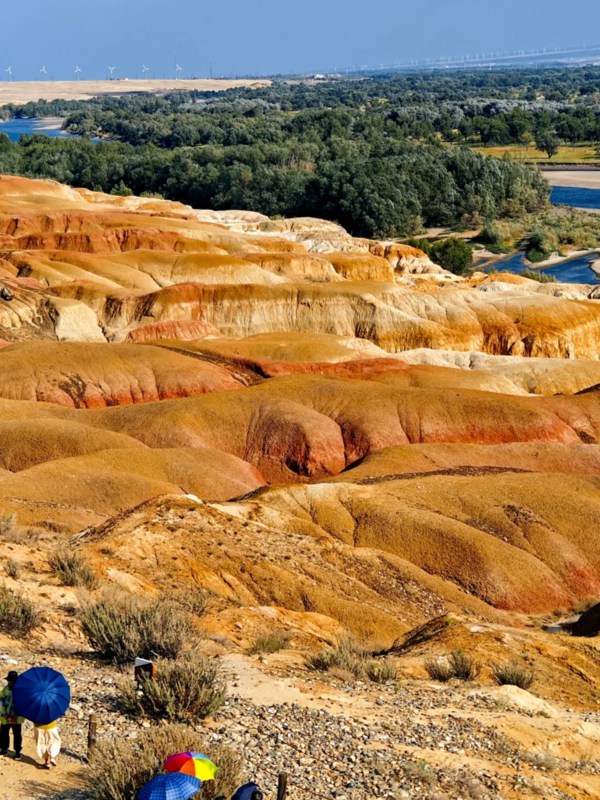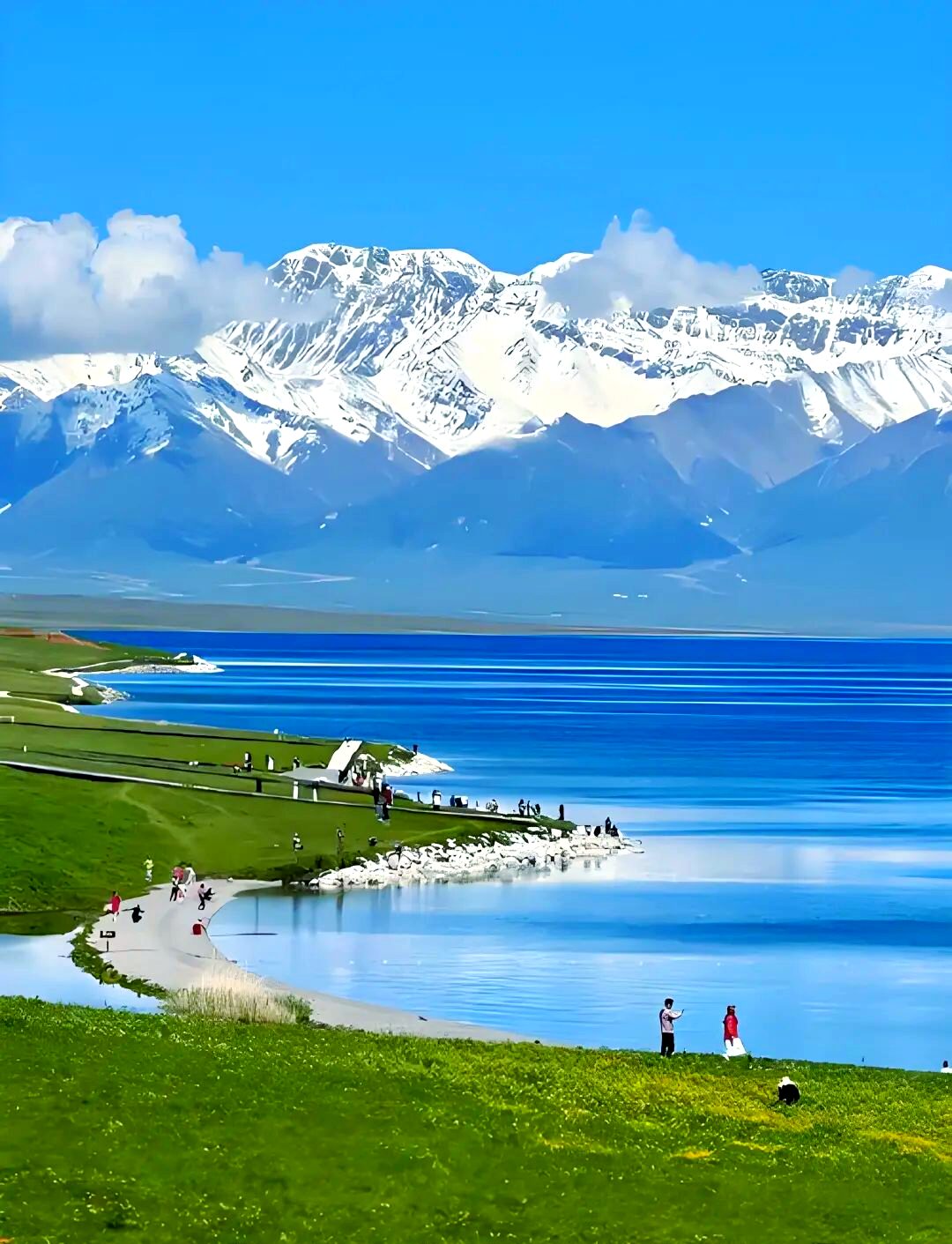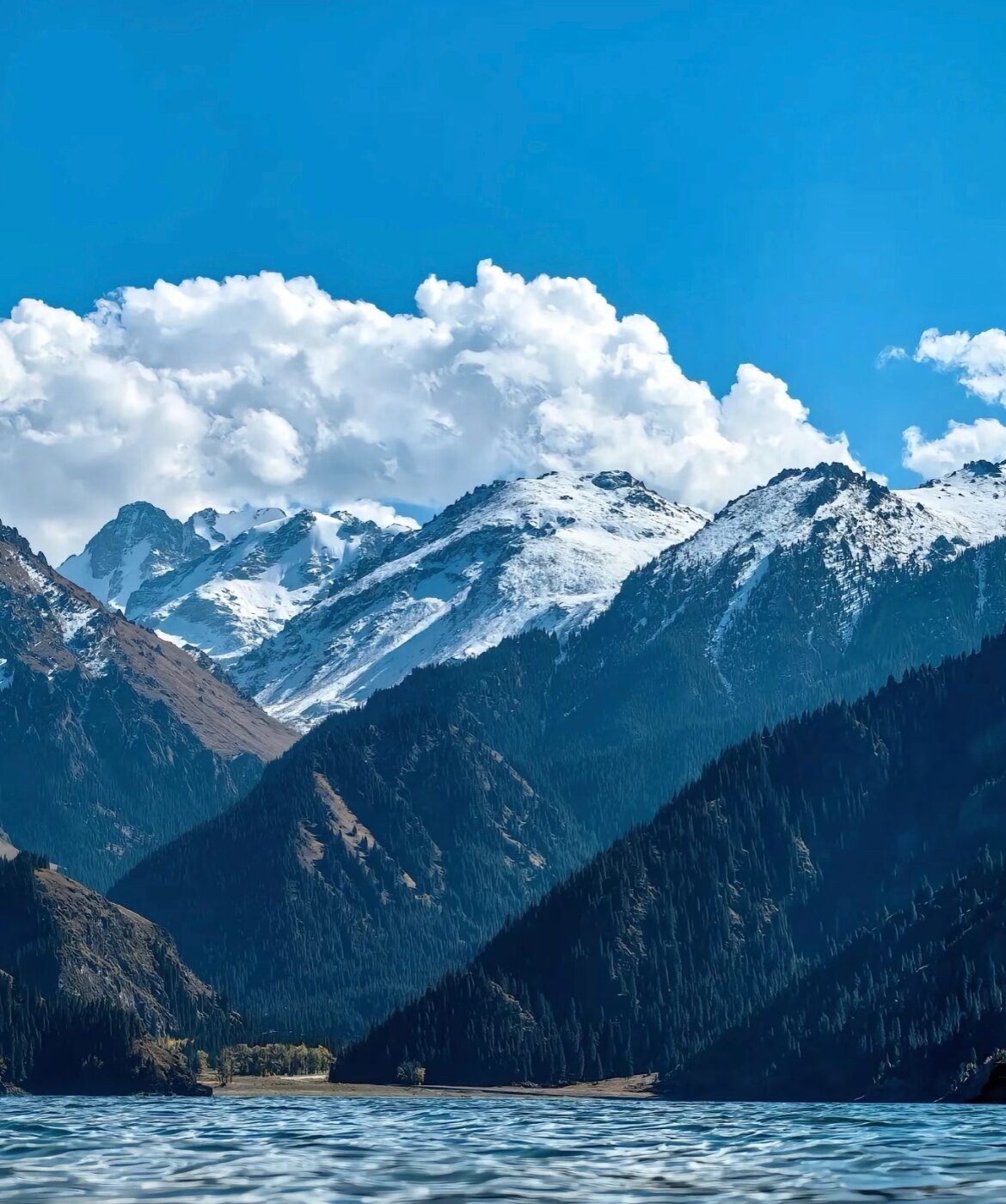
Xinjiang
Xinjiang, China’s vast and culturally rich region, is honestly an untapped gem for travelers seeking adventure and discovery. Whether you are drawn to its unique natural beauty, ancient Silk Road history, or the vibrant mix of ethnic cultures, Xinjiang offers an experience unlike any other. From the snow-capped peaks of Kanas Lake to the bustling bazaars of Kashgar, every corner of this region presents a new story, a new landscape, and a new adventure. It almost feels like a continent unto itself, which is why a detailed xinjiang travel guide is absolutely essential to planning your exploration.
So, in this comprehensive xinjiang travel guide, we’ll help you navigate the best times to visit, where to go, and what to do to make your trip unforgettable. Ready to dive into the wonders of Xinjiang? Keep reading to find out why this province should be on your travel radar and how you can explore its most captivating destinations.
Quick Facts of Xinjiang
| Category | Details |
|---|---|
| 📍 Name & Location | Xinjiang Uyghur Autonomous Region, in China’s far northwest bordering Central Asia |
| 🗺️ Address (Hub) | Urumqi — main transport gateway and capital city |
| 🌄 Key Features | Deserts, snow-capped mountains, alpine lakes, ancient oasis towns, Silk Road landscapes |
| 🧕 Ethnic Cultures | Uyghur, Kazakh, Hui, Tajik, Mongolian communities with distinct crafts, music, and traditions |
| 🍢 Signature Foods | Lamb kebabs, hand‑pulled noodles, polo (抓饭), nang bread, yogurt, dried fruits, mulberry juice |
| 🏞️ Highlight Destinations | Kanas & Hemu, Heavenly Lake, Kashgar Old Town, Turpan, Taklamakan Desert |
| 🎒 Suitable For | Culture lovers, photographers, trekkers, food explorers, and off‑the‑beaten‑path travelers |
Xinjiang: The Destination Everyone Ends Up Raving About
- Forest of Xinjiang
- Kashgar
- Urumqi’s Colorful Markets
Natural Landscapes: From Alpine Peaks to Desert Vistas.
Xinjiang is home to some of the most stunning natural landscapes in China, from the towering Tianshan Mountains to the vast, arid expanse of the Taklamakan Desert. The region's unique geography offers opportunities for trekking, photography, and outdoor adventures.
A couple of highlights you absolutely shouldn't miss are:
Heavenly Lake (Tianchi): Nestled in the mountains and surrounded by lush forests, it provides a truly tranquil escape.
Kanas Lake: With its changing hues throughout the day, this spot is perfect for nature lovers and photographers alike.
The diverse landscapes are not only visually impressive but also culturally significant. For example, the ancient Silk Road passed through Xinjiang, making it a melting pot of various cultural influences. This rich natural and cultural heritage makes Xinjiang a must-visit for travelers seeking both adventure and history.
Silk Road Heritage: Where East and West Converged.
Xinjiang sits right at the crossroads of East and West, and you can feel that history when you're walking through places like Kashgar. The old cities here—narrow alleyways packed with vendors selling spices, hand-woven textiles, and crafts that families have been making for generations—they honestly feel like stepping into a different era. You'll hear vendors calling out in Uyghur, the aroma of street food drifting through the air, and it's this sensory blend that connects you to centuries of trade and cultural mixing.
Cultural Mosaic: Immersion in Uyghur and Kazakh Traditions.
Here's where Xinjiang really stands out: over a dozen ethnic groups call this region home. The Uyghurs are the largest group—mostly Muslim—followed by Kazakhs, Tajiks, and others. Each group brings its own festivals, music, clothing, and food traditions, creating this rich cultural tapestry you won't find anywhere else in China. Visiting a Uyghur family for a meal in Kashgar, or wandering through Urumqi's colorful markets where you might hear three different languages in the span of five minutes—these experiences give you real insight into daily life here.
Discover the Best Season for Your Ultimate Xinjiang Adventure.
Selecting the right time to go can truly shape your experience, as each season in Xinjiang offers its own unique charm.
| Season | Months | Key Features | Recommended Activities |
| Spring | Mar – May | Mild weather; Southern Xinjiang features apricot and almond blossoms; lower tourist density. | Cultural sightseeing (Kashgar, Turpan), photography. |
| Summer | Jun – Aug | Peak season; warm to hot temperatures; high altitude areas are comfortably cool. | Northern Xinjiang lake exploration (Kanas), high-mountain hiking, attending festivals. |
| Autumn | Sep – Nov | Optimal scenic beauty with golden foliage; comfortable trekking temperatures; harvest season. | Landscape photography (Kanas, Tianshan), hiking, outdoor adventures. |
| Winter | Dec – Feb | Very cold, especially in the north; heavy snowfall; white, quiet landscapes. | Winter sports (skiing), experiencing traditional winter life, avoiding crowds. |
See How North and South Xinjiang Offer Different Journeys.
- Tianshan Mountains
- Grape Valley
- Taklamakan Desert
Xinjiang is vast and often divided into the North and South, offering two completely different travel experiences. The region is geographically and culturally divided, offering two distinct travel experiences:
| Feature | Northern Xinjiang | Southern Xinjiang |
| Primary Focus | Natural scenery, alpine lakes, grasslands. | History, ethnic culture, desert landscapes. |
| Key Destinations | Urumqi, Kanas, Heavenly Lake, Sayram Lake. | Kashgar, Turpan, Taklamakan Desert. |
| Cultural Influence | Stronger Kazakh influence, diverse nomadic culture. | Dominant Uyghur cultural presence, ancient Silk Road traditions. |
| Topography | Mountains (Tianshan, Altai), forests, vast steppes. | Deserts, oases, lower elevations (Turpan Depression). |
| Logistics | Generally better developed infrastructure; easier for independent travel. | Requires more logistical planning; deeper cultural immersion. |
Highlights of Northern Xinjiang
Northern Xinjiang is known for its breathtaking landscapes, including the famous Kanas Lake and Heavenly Lake. The region is home to picturesque grasslands, ancient petroglyphs, and some of the most popular tourist destinations in Xinjiang. Urumqi, the capital of Xinjiang, is a great starting point for exploring northern destinations, with easy access to both cultural sites and natural beauty.
The Tianshan Mountains offer a diverse range of activities, from skiing in the winter to hiking and camping during the summer. The northern region is also more developed in terms of infrastructure, making it easier for independent travelers to navigate and explore on their own, especially if you want a quieter alpine corner to slip into through Tianshan Grand Cayon: Xinjiang’s Hidden Alpine Escape Near Urumqi.
Highlights of Southern Xinjiang
Southern Xinjiang, on the other hand, offers a more off-the-beaten-path experience. This area is known for its rich history, particularly its role in the ancient Silk Road. The city of Kashgar, with its famous Old Town, is a must-visit for those interested in exploring the local Uyghur culture.
Turpan, with its ancient ruins and the Grape Valley, offers an authentic glimpse into the region’s historical significance. Southern Xinjiang is also home to the vast Taklamakan Desert, where you can experience the beauty of the sand dunes and the unique desert culture. If you’re looking for a more culturally immersive experience, Southern Xinjiang is definitely the place to be.
Explore the Must-See Destinations You Need to Prioritize.
- Sayram Lake
- Nalati Grassland
- Karakoram Highway (KKH)
To appreciate Xinjiang’s diversity, comparing and contrasting its main attractions is highly effective.
Kanas vs. Tianchi: Comparing Alpine Lake Experiences.
Both are iconic alpine lakes, yet they differ significantly in scale and accessibility:
Kanas Lake: Represents the rugged, remote beauty of Northern Xinjiang. It is known for its mystical atmosphere and dramatic color changes, requiring significant travel time but rewarding visitors with pristine wilderness and proximity to the traditional Kazakh village of Hemu.
Heavenly Lake (Tianchi): Offers classic mountain serenity with easy access from Urumqi. While smaller, its setting framed by the Tianshan peaks is equally stunning, making it ideal for travelers seeking a less time-intensive nature experience, especially if you want a classic alpine escape like Tianchi Lake in Xinjiang’s Tianshan Mountains: A Turquoise Alpine Lake Framed by Snow Peaks and Legends.
Kashgar vs. Jiaohe: Living History Against Ancient Ruins.
These two destinations epitomize the historical significance of the South, one being a living relic, the other a preserved ruin:
Kashgar Old City: A rare example of a continuously inhabited, millennia-old Silk Road city. Visitors experience active Uyghur culture in narrow, labyrinthine streets, centered around the massive Id Kah Mosque and its vibrant Sunday Bazaar. It is history in motion.
Jiaohe Ancient Ruins (Turpan): Offers a preserved, uninhabited snapshot of history. It is one of the largest and best-preserved ancient earth-built cities in the world—an uninhabited snapshot of history that’s also referred to as Yarkhoto in Xinjiang: The 2,300-Year-Old Silk Road Fortress Carved into China’s Desert Plateau, providing a unique archaeological perspective on the former importance of Turpan as an oasis hub on the northern Silk Road route.
Sayram Lake vs. Nalati: High-Altitude Serenity vs. Nomadic Steppe Life.
This pairing highlights the difference between Xinjiang’s high-altitude water bodies and its lush river valleys:
Sayram Lake: Situated high in the Tianshan Mountains, it is the largest and highest alpine lake in Xinjiang. It offers sweeping, uninterrupted vistas of water reflecting the surrounding snowy peaks and is a place of grand, silent beauty, especially when you remember that Sayram Lake—also known as Sailimu Lake in Xinjiang: Where Snow Peaks Meet Blue Waters and Kazakh Hospitality Feels Like Home—sits as the largest and highest alpine lake in the Tianshan Mountains.
Nalati Grassland: Located in the Ili River Valley, this destination is characterized by rolling hills and lush meadows. It is a cultural center for the Kazakh people, providing a vibrant, active picture of nomadic life and offering activities like horseback riding and traditional yurt stays, and if you want a deeper on-the-ground glimpse into this nomadic landscape, take a moment to explore Nalati Grassland in Xinjiang: Where Sky Meets Steppe and Culture Breathes.
KKH vs. Taklamakan: The Ultimate Road Trip and Desert Challenge.
These two routes define the region’s extreme adventurous geography:
Karakoram Highway (KKH): A spectacular feat of engineering and one of the world's highest paved roads, connecting Xinjiang with Pakistan. It is a mountain passage that offers unparalleled views of the Pamir mountain ranges, making it an epic journey for road-trip enthusiasts seeking high-altitude thrills.
Taklamakan Desert: Known as the "Sea of Death," this vast desert defines the heart of Southern Xinjiang. It represents the ultimate arid landscape, offering the unique adventure of exploring endless, shifting sand dunes via guided treks or camel rides, a true test of endurance and solitude.
Savor the Silk Road Flavors Your Must-Try Xinjiang Cuisine Checklist.
- Lamb Kebabs
- Hand-Pulled Noodles
- Polo (Pilaf)
Xinjiang's cuisine is known for its bold, aromatic flavors, heavily influenced by Central Asian, Middle Eastern, and regional Chinese cooking styles. The use of mutton (lamb) and spices like cumin (zìrán) and chili is central to its identity.
| Dish (English) | Local Name | Description & Flavor Profile |
| Lamb Kebabs | Yáng Ròu Chuàn (羊肉串) | Seasoned lamb skewers grilled over charcoal. The meat is tender and savory, defined by the generous use of cumin and chili, providing a smoky, spicy kick. |
| Hand-Pulled Noodles | Lā Miàn (拉面) | Long, elastic, and chewy noodles created by stretching and folding the dough. They are typically served in a rich, spicy broth with meat and vegetables. |
| Polo (Pilaf) | Polu (抓饭) | The signature Uyghur rice dish. This flavorful one-pot meal combines rice, tender lamb, sweet carrots, and aromatic spices, cooked until the flavors deeply meld. |
These dishes are a true reflection of the cultural exchange along the ancient trade routes. For the most authentic experience, seek out local eateries and night markets—Kashgar's night market is famously recommended for kebabs, and Urumqi is a great place to try traditional polo. Xinjiang food offers a delicious window into the region's unique cultural fusion.
Plan Your Perfect 10-Day Cultural Journey Through Southern Xinjiang.
Embark on a journey through Southern Xinjiang, where history, culture, and nature converge in a stunning landscape. Whether you're a history enthusiast, an adventure seeker, or a food lover, this journey will offer unforgettable experiences that will leave you with a deeper understanding of this unique part of China.
| Day | Focus Area | Highlights & Activities |
| Day 1 | Urumqi Arrival & Turpan Transfer | Arrive in Urumqi. Take the high-speed rail or flight to Turpan. Check into the hotel and prepare for exploration. |
| Day 2 | Turpan Exploration | Visit the Jiaohe Ancient Ruins and the Karez Wells (ancient irrigation system). See the Emin Minaret (Su Gong Ta). |
| Day 3 | Travel to Kashgar | Take a morning flight from Turpan to Kashgar. Settle in and begin exploring the immediate area of the Old City. |
| Day 4 | Kashgar Old City Immersion | Spend the day exploring the Kashgar Old City, including the Id Kah Mosque and the surrounding traditional Uyghur neighborhoods. |
| Day 5 | Kashgar Bazaars & Culture | Visit the famous Sunday Grand Bazaar (timing dependent) and the livestock market. Enjoy a traditional Uyghur cooking experience. |
| Day 6 | Karakoram Highway Adventure | Day trip along a section of the Karakoram Highway to see the stunning Pamir scenery, including Karakul Lake. |
| Day 7 | Desert Experience (Hotan) | Travel (or fly) to Hotan. Begin a guided experience of the Taklamakan Desert, such as a camel trek or desert drive. |
| Day 8 | Desert & Hotan Culture | Continue desert exploration. Return to Hotan to explore its jade and silk markets, known for traditional craftsmanship. |
| Day 9 | Return to Kashgar | Travel back to Kashgar. Use the afternoon for souvenir shopping or visiting any missed sites, like the Kashgar Museum. |
| Day 10 | Departure | Depart from Kashgar to your next destination. |
Master the Essentials: Visas, Transport, and Budgeting for Your Trip.
Visa and Permits: Your Legal Entry Requirements.
Visa Requirements: Foreign travelers require a standard Chinese visa to enter Xinjiang.
Permit Requirements: Travel to certain border areas, like parts of the Pamir region or specific military zones, may require additional travel permits. It is essential to coordinate with a local agency or operator beforehand.
Transportation Logistics: Getting Around via Flights, Trains, and Private Drivers.
Navigating the vast geography of Xinjiang requires careful planning of both entry and internal travel.
| Aspect | Details |
| Accessing Xinjiang | The primary gateway is Urumqi Diwopu International Airport, offering connections across China and to various international cities. High-speed rail also connects Urumqi to eastern China. |
| Internal Travel | Major cities are linked by domestic flights and long-distance trains. For exploring remote areas, hiring a private car and driver is often the most efficient and flexible option, though public buses are available. |
Accommodation and Expenses: Budgeting Your Trip and Estimated Costs.
Understanding the cost and lodging options helps in setting a practical budget for your adventure.
| Category | Details |
| Lodging Options | Options range from international luxury hotels in Urumqi and Kashgar to comfortable mid-range hotels (starting around ¥300/night) and local guesthouses (homestays), which offer a more authentic experience. |
| Trip Budget (10 days) | Mid-range: Typically costs around ¥8,000–¥10,000 (USD $1,200–$1,500), excluding international flights. Budget: Travelers can expect costs around ¥4,000–¥6,000. |
Practical Advice: Essential Tips for Safety and Payment on the Road.
Payment: While Alipay and WeChat Pay are widely accepted in major cities, travelers should carry physical cash (Yuan) when venturing into smaller towns and remote communities.
Safety: Xinjiang is generally safe for tourists, though visitors should remain respectful of local laws and cultural customs. A heightened security presence is common in urban areas.
FAQ: Get Answers to Your Most Pressing Xinjiang Travel Questions.
Q. Will my usual VPN work well in Urumqi and Kashgar?
A: Honestly, maybe not reliably. While general internet access is available, travelers often find their familiar VPN services are heavily restricted, especially near key security checkpoints or major cultural sites. It's wise to assume minimal reliable foreign internet access. Our xinjiang travel guide recommends downloading essential maps and translation apps before you arrive. You might notice Wi-Fi is often slow or requires SMS verification via a Chinese number, complicating connectivity further.
Q. Is altitude sickness a real concern when traveling the Karakoram Highway?
A: It almost feels like people underestimate the altitude! Yes, it can definitely be a concern. The Karakoram Highway (KKH) route to Karakul Lake reaches nearly 4,000 meters. Our xinjiang travel guide strongly advises spending a full day or two acclimatizing in Kashgar (around 1,200m) before beginning the ascent. Look out for mild symptoms like headaches and shortness of breath; taking it slow and staying hydrated is the best preventative measure, particularly if you're not accustomed to high elevation.
Q. What specific dressing rules should I follow when visiting mosques or the Kashgar Old City?
A: To be fair, respect is key. While Urumqi is generally more liberal, in the Kashgar Old City and around sacred sites like the Id Kah Mosque, modest dress is essential. Women should wear clothing that covers shoulders and knees. Men should also wear long trousers. This xinjiang travel guide suggests carrying a light scarf for quick coverage when entering religious buildings to show proper respect for local Uyghur customs and to align with local sensibilities, enhancing your authentic cultural experience.
Q. Are there any restrictions on tourist itineraries, or can foreigners travel freely in Xinjiang?
A: Yes, foreigners can travel freely in major cities like Urumqi and Kashgar with a standard visa. However, travel to certain border regions, the Taklamakan Desert, or remote mountainous areas often requires additional permits. This is where your xinjiang travel guide should include coordination with a local agency, as some areas may have variable restrictions. Always check the most current regulations, as rules can change periodically.
Q. What is the availability and reliability of ATMs/cash withdrawals outside of Urumqi and Kashgar?
A: To be frank, it gets dicey quickly once you leave the capital and the major Silk Road cities. While Bank of China (BOC) ATMs usually accept foreign cards, they can be sparse in remote towns or along the KKH. This xinjiang travel guide strongly recommends withdrawing sufficient cash in Urumqi or Kashgar before embarking on any multi-day journey into the smaller towns or national parks. It is important to carry cash, as some smaller vendors may not accept mobile payment systems.
Q. Is it easy for a non-Mandarin speaker to navigate Southern Xinjiang (Kashgar, Hotan)?
A: Honestly, outside of major hotels and airports, it's kind of challenging. English proficiency is low. In Southern Xinjiang, Uyghur is the primary spoken language among locals. While hotel staff usually speak some Mandarin, carrying a translation app (downloaded offline!) or hiring a local guide, as suggested in our xinjiang travel guide, will drastically improve your navigation and interaction experience. Relying solely on English or Mandarin in remote areas will limit your cultural immersion.
Q. Do I need a special Chinese driving license if I want to self-drive?
A: Yes, absolutely. Foreign driving permits are not legally recognized in mainland China for long-term travel. For any self-drive adventure, you must obtain a temporary Chinese driving license through the local traffic authorities. This is a crucial step often overlooked by first-timers in their xinjiang travel guide planning. If you do not have a Chinese license, renting a private car with a local driver is highly recommended for exploring remote regions.
Q. What should I expect regarding photography restrictions and security checks?
A: Security is noticeable and frequent. Expect checks of bags, phones, and IDs at train stations, hotel entrances, and major sites. While landscape photography is fine, this xinjiang travel guide reminds travelers to never take photos of security personnel, government buildings, or checkpoints. Always ask for permission before photographing individuals, especially when visiting local ethnic communities, to ensure you are respecting local customs.

